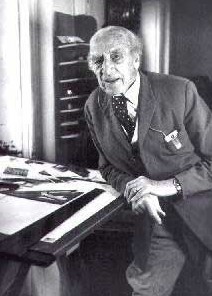Clough Williams-Ellis
| Sir Clough Williams-Ellis | |
|---|---|
 |
|
| Born |
28 May 1883 Gayton, Northamptonshire, England |
| Died | 9 April 1978 (aged 94) |
| Occupation | Architect |
| Projects | Creator of the Italianate village of Portmeirion in North Wales |
Sir Bertram Clough Williams-Ellis, CBE, MC (28 May 1883 – 9 April 1978) was a British architect known chiefly as the creator of the Italianate village of Portmeirion in North Wales.
Clough Williams-Ellis was born in Gayton, Northamptonshire, England, but his family moved back to his father's native North Wales when he was four. The family have strong Welsh roots and Clough Williams-Ellis claimed direct descent from Owain Gwynedd, Prince of North Wales.His father John Clough Williams Ellis (1833-1913) was a clergyman and noted mountaineer while his mother Ellen Mabel Greaves (1851-1941) was the daughter of the slate mine proprietor John Whitehead Greaves and sister of John Ernest Greaves.
He was educated at Oundle School in Northamptonshire. Though he read for the natural sciences tripos at Trinity College, Cambridge, he never graduated. After a few months at the Architectural Association School of Architecture in London in 1903–04 (which he located by looking up "Architecture" in the London telephone directory), he worked for an architect for a few months before setting up his own practice in London. His first commission was probably Larkbeare, a summer house for Anne Wynne Thackeray and Mary Venables in Cumnor, Oxfordshire, in 1903-4 (finished 1907) which he designed whilst still a student.
In 1908 he inherited a small country house, Plas Brondanw, from his father, restoring and embellishing it over the rest of his life, and rebuilding it after a fire in 1951. He served with distinction in the First World War, serving first with the Royal Fusiliers and then the Welsh Guards, with whom he was awarded the Military Cross. Postwar he helped John St Loe Strachey (who became his father in law) revive pisé[1] construction in Britain, building an apple storehouse followed by Harrowhill Copse bungalow at Newlands Corner (photos[2]) using shuttering and rammed earth. During the 1920s, he began work on Portmeirion, later the location for The Prisoner (1967–68) TV series.
...
Wikipedia
